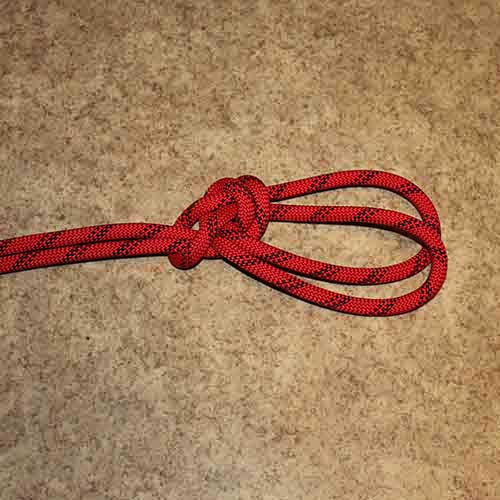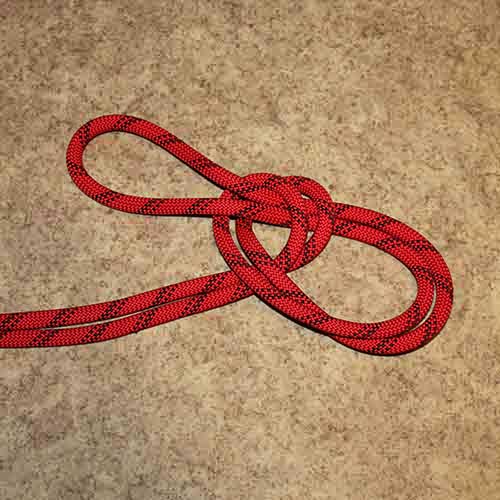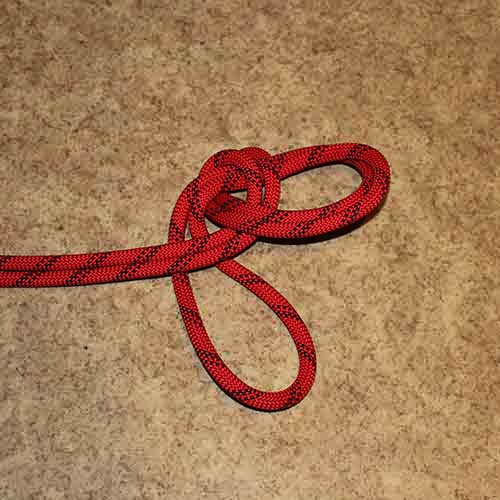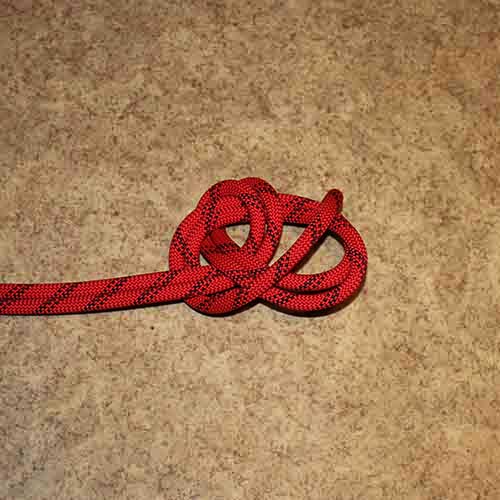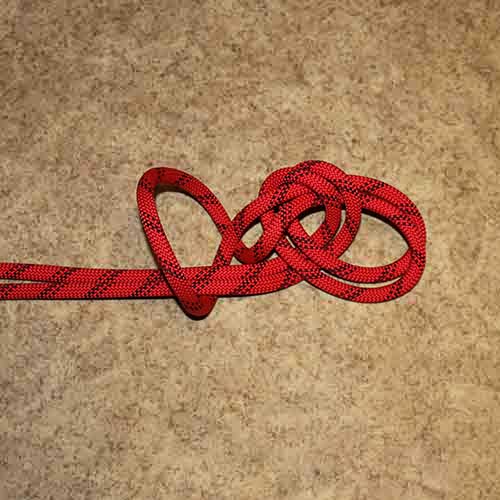Description
The Bowline on a bight is a knot which makes a pair of fixed-size loops in the middle of a rope.
Use
This knot can be used to provide a toe hold in the middle of a rope; to make an emergency bosun’s chair;
and to create an upper rope “block” to make a crude purchase by threading the rope round an anchor point
and then back up through the loop. It is sometimes used in sport climbing to tie into two anchor bolts independently.
This knot is convenient when a dependable loop is required but neither end of the line is available. It’s also
commonly used as a seat while being hoisted as there are two secure loops as opposed to the traditional one loop
bowline. In theory, this knot would make hoisting many people with one line possible. This knot is very popular
in caving as it allows the load to be spread between two anchor points, reducing the stress placed on them and
providing a backup should one fail. Commonly known as the Y-hang it allows for a free-hang descent and can be
easily adjusted to avoid waterfalls or rub points.
This knot can replace the figure-eight knot when tying into a climbing harness by tying a
regular bowline knot and then re-threading it, such as is done with a figure eight knot. However, it is critical
to use a strong backup knot with plenty of tail beyond the knot, as the knot may untie during long climbs. The
advantage of using this knot instead of the figure eight knot is that it can be easily untied after a severe fall.
Releasing
Non-jamming
Security
2011 testing shows that the knot might slip when only one loop is loaded. Cavers and canyoneers ought to fasten
their cow-tail carabiner through both loops.
Tying
The bight of rope is initially used to make a bowline in the usual way. However, the bowline is not completed by
going on round the standing end(s) and tucking the bight back down beside itself. Instead, the bight is opened up
to allow the whole knot to pass through it. When tightened, the bight now embraces the pair of standing ends.

